Exploring Beautiful Ants Around the World
Australian Green Ants

The Australian Green Weaver Ant (Oecophylla smaragdina) is a beautiful iridescent green. Green worker ants build nests from leaves by weaving them together into large elliptical shapes.
The leaves are “glued’ together with a silky substance produced by larvae. In order to obtain the silky substance, workers squeeze the larvae with their mandibles.
The “Green Queen??? lays her eggs on a leaf and protects her larvae until they become mature workers. A colony can consist of a hundred nests spanning over numerous trees. When one nest gets too large, worker ants carry some of the larvae from a current nest to a new construction site.
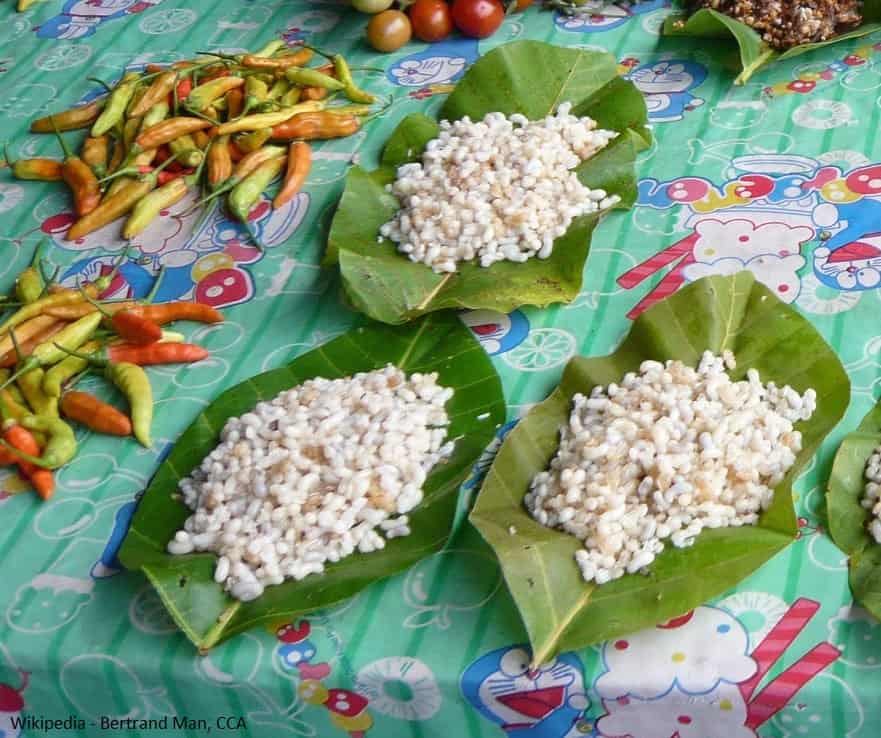
Weaver ant larvae in Thailand, sells for twice the amount as good quality beef and is also considered in other countries as a high priced delicacy.Besides being a source of food for humans, the Green weaver ant is valued by farmers, especially in Southeast Asia, as a natural form of pest control against agricultural pests.
Pot-Belly Honeypot Ants
Honeypot Ants of the genus Myrmecocystus, are found in a variety of arid or semi-arid environments including California.
Honeypots get their name from the size of their bellies which looks like they’re filled with honey. Honeypot ants live on insects and the sugary secretions obtained from glands on flowers and other parts of plants.
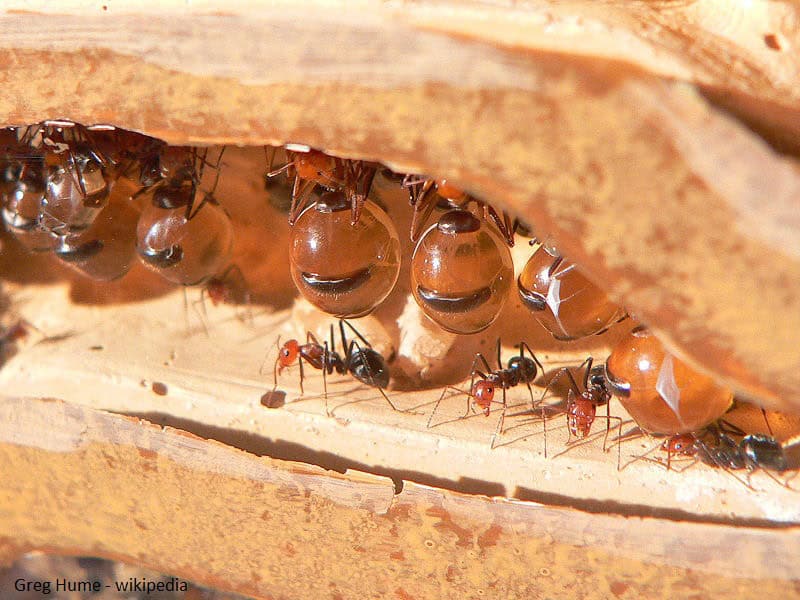
In times of harvest, when food is plentiful, Honeypot ants select certain workers called “repletes??? to store food for future use. The repletes are tucked away in a safe spot away from predators, including humans (Australian Aborigines often supplement their diet with Honeypot ants).
Repletes are so fat; they can’t walk and are basically stationary. When a hungry worker needs nourishment, she wanders over to the replete, strokes and prods it a bit and then waits for it to feed her (upchuck a meal).
Even though big-bellied repletes provide a food reserve for the colony during hard times, Honeypot ants still practice kleptobiosis (food robbing by some ant species).
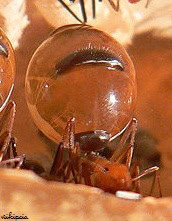
Honeypots are fast and agile; sometimes acting alone or in small robber packs. They often stop and inspect Harvester ants to see what the Harvesters might be transporting back to their nest.If the Harvester ant is carrying plant material, it is allowed to pass; on the other hand, if it is carrying a termite, it gets robbed. When the Harvester ant tries to bite the Honeypot, the Honeypot is so quick-footed; it’s able to run away, termite and all.
Honeypots prey on insects and other arthropods of many kinds but termites are their favorite. Honeypot ants can and will gather termites on their own (without stealing), especially after a rain when termites appear in large numbers, making them easy targets for the honeypot ants.
Colorful Ghost Ants
Ghost Ants (Tapinoma melanocephalum) are peculiar in color hard to see; the head and thorax are a deep dark brown but the gaster (abdomen) and legs are an opaque or milky white.
These ants are widely distributed in tropical and subtropical areas but their range is expanding having established themselves in Florida and in Hawaii.
Sometimes a pest in the northern states, the Ghost ant can only survive in the north if they nest in greenhouses and other heated environments.
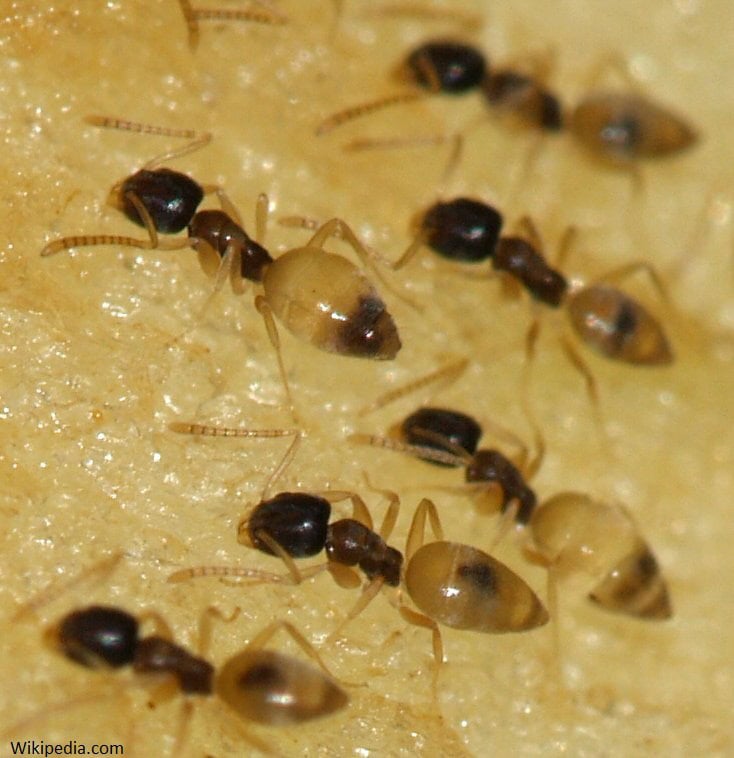
Ghost ant bodies change into beautiful colors when eating certain foods. For example, recently it was discovered if a Ghost ant drank colored sugar water, its abdomen changed color.
You can see which sugar water the ant sampled by the color of its abdomen. And if the Ghost ant drank from more than one color, both colors would appear in its belly. Sweets are preferred but grease and other insects are sometimes eaten.
Outdoors, Ghost ant generally live in just about anything with moisture: plants, dead but temporarily moist grass, wood and soil. When crushed, these ants emit an odor similar to that of rotten coconuts!
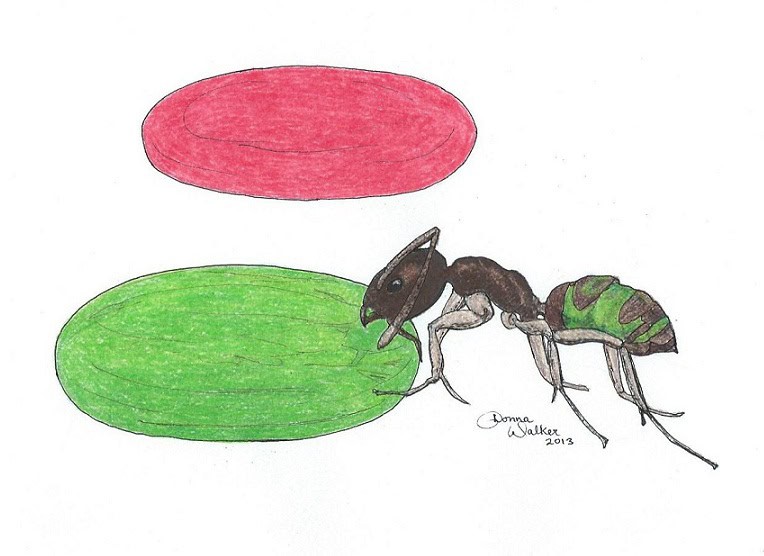
Ghost ants have a strong need for moisture and may nest inside when the weather is dry. They build their nests in walls or spaces between cabinetry and in baseboards. They will also nest in potted plants. They can even live in book bindings! Although they can be a pest, Ghost ants can be “good ghosts” when they prey on and control mites that attack plants.
In California, none of our ants are so pretty as these exotic species!
Call today at 1-800-986-1006 for help with an ant infestation. You’re also welcome to complete our contact form and a caring Hearts Pest Management representative will contact you shortly.


